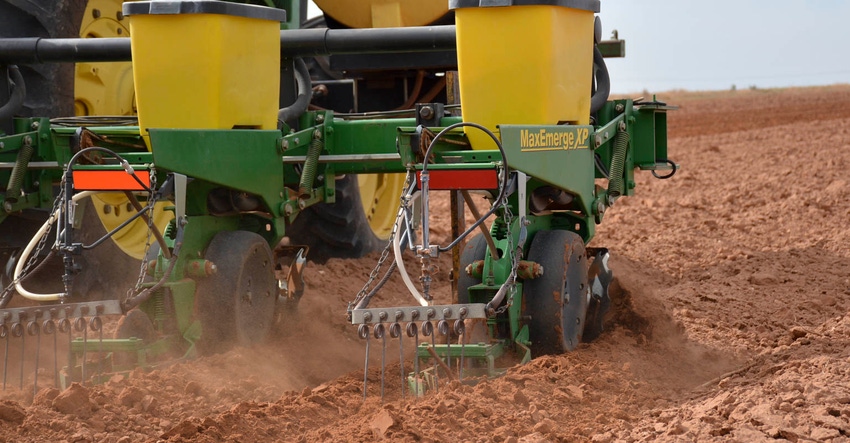
Todd Baughman often reminds farmers that their highest crop yield potential comes on the day they plant the seeds.
Bad things that happen after that reduce the possibilities, he says.
Baughman, Oklahoma State University Extension weed scientist, repeated that warning recently during a virtual Oklahoma Peanut Expo. The annual event used Zoom technology due to COVID-19 concerns.
Some of the bad things that happen to crop prospects, Baughman says, might be beyond remediation or prevention. Drought, downpours, or late cold snaps sometimes play roles in productivity, and farmers learn to live with the threats.
What to avoid
It’s the self-imposed weed management miscues Baughman warns producers to avoid.
 (Photo by Shelley E. Huguley)
(Photo by Shelley E. Huguley)
“Early weed control is important,” he said. He said peanut (and other) producers should concentrate on starting the season clean and staying that way. Weeds that don’t come up don’t create problems that limit crop potential.
He also reminded producers that not all weed control issues result from resistance. “We have some tough weeds that are just hard to kill,” he said. He mentioned nutsedge and Russian thistle as examples. “For these and other hard-to-manage weeds, you might need to employ a different management strategy.”
See, Peanuts ‘doing good’ in Oklahoma, nation
Whatever system producers choose, Baughman said their options should be backed up by sound scientific information. “Make certain you get value from every dollar you put into your weed management program.”
Fallow programs
He said off-season should also be a critical part of the process. “Fallow programs help prevent weed problems,” he said. “Many weeds grow into the fall and spring. A fallow weed management program keeps those weeds from developing into hard-to-manage stands.
“Start clean to stay clean,” he added. “The first four to six weeks are crucial for peanut development. Early weed control is essential to support that early growth.”
He said regardless of the herbicide choice, it will not be effective if not properly activated. “Irrigation or rainfall is important to activate these early herbicide applications.”
He recommended starting with a yellow herbicide. Dual, Outlook, Warrant, Zidua, Anthem Flex and Valor are all good residual herbicide options,” he said.
He cautioned producers about “possible resistance to Valor. Anyone who has relied on Valor should watch for resistance. It would be detrimental to peanut production if we lost it.”
At-crack treatments
He recommended tank-mixing PPO herbicides with the yellows. Tank mixes have shown a 15% to 20% control advantage versus either product used alone, Baughman said. Tank mixes also reduce the potential for resistance.
See, Planting day offers best yield potential
Baughman said gramoxone has been a “backbone for peanut weed control, as an at-cracking treatment. At-crack treatments have been a key part of success. Layering residuals is also important.”
“Weed control is an integrated approach,” Baughman said. Not following a science-based, consistent system creates one of the bad things that can happen to a crop after planting.
He offers a short list of reasons for weed control failures, including:
Not starting clean
Not using a residual herbicide
Not activating the residual herbicide, and
Applying post-emergence herbicides too late
Some bad things that farmers have no means to control happen to a crop, so taking care of the ones they can manage helps them hold onto the planting day potential.
Read more about:
Tank MixAbout the Author(s)
You May Also Like






